There’s no doubt that trying to multitask all the time, reply to all of your clients, respond to comments made by your visitors, and use a bunch of different applications to manage my workflow is a complete overkill for my productivity and creativity, along with a constant headache.
I wanted to limit all that workflow and stress as much as possible, and due to having Notion, Capacities, Obsidian, and usually a few sticky notes hanging around on my desktop, that clutter needed to be resolved.
I’ve also tried hundreds of different to-do and note-taking apps, and if you’re looking for something more complex, take a look at my previous article:
But can you really replace all those apps with a simple to-do app? I had the same question, so I went on a quick journey to find out.
What is Todoist?
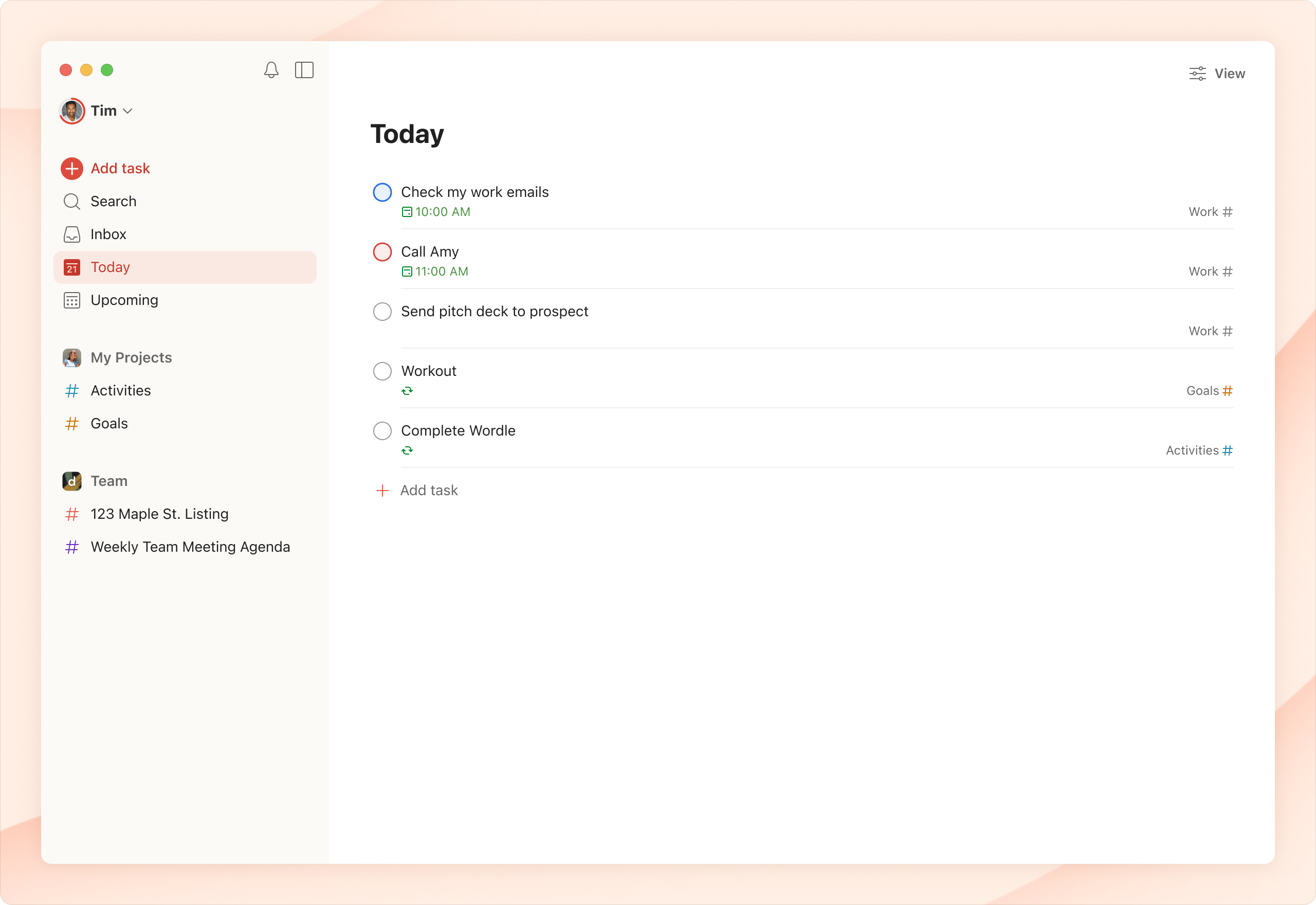
Created by a student named Amir Salihefendić back in 2007, who wanted to build an app to manage his own tasks and workload, Todoist is now one of the most popular to-do list and task-management solutions in the world – and for all the good reasons, too.
Todoist comes as a cross-platform application available for Windows, macOS, Linux, Android, and iOS devices. It’s available through its web-based version for those who aren’t interested in installing more apps. It has a free and a premium version, which we’ll talk about in a minute, and there are literally hundreds of tutorials and guides about it.
Here’s how it looks on mobile devices:
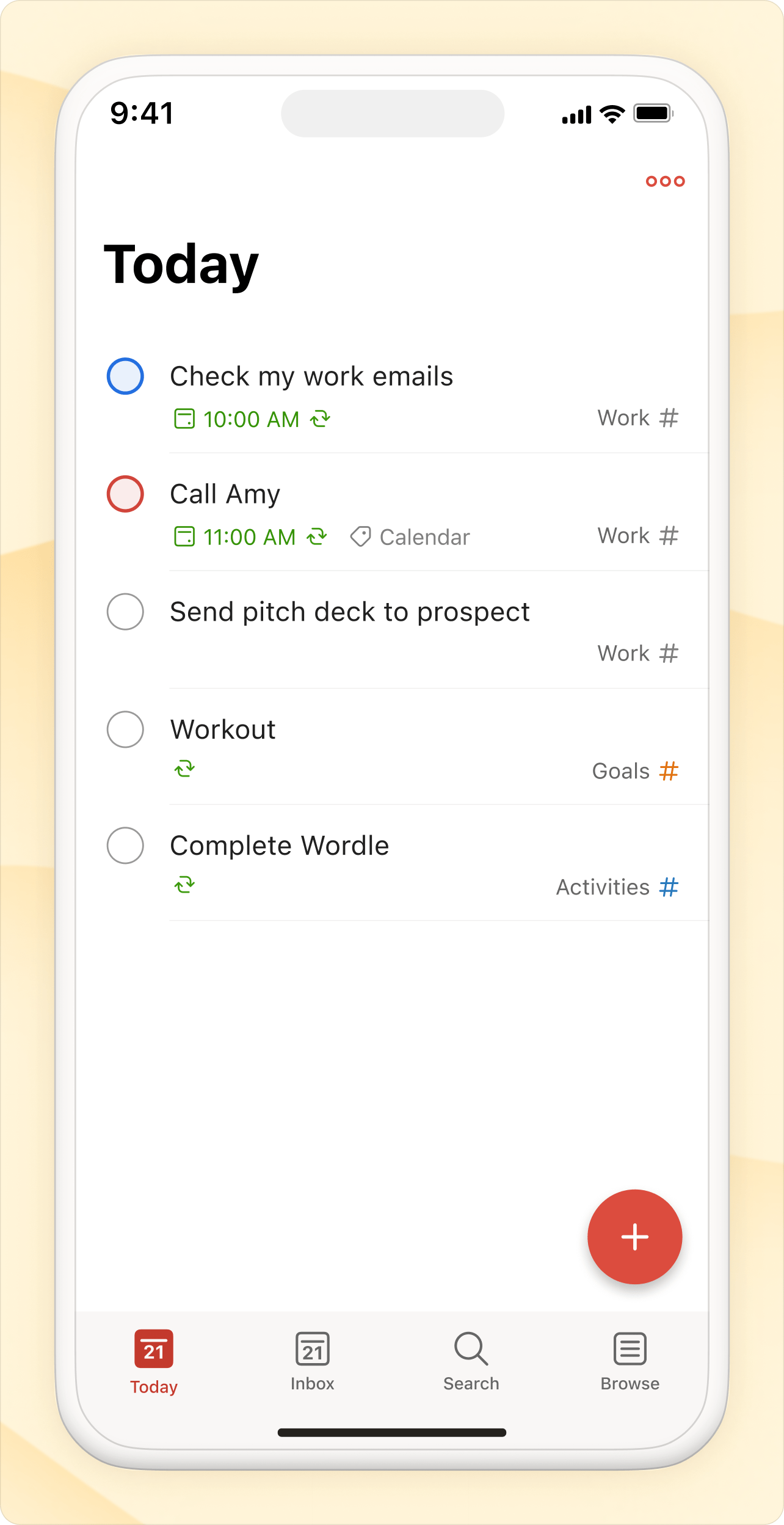
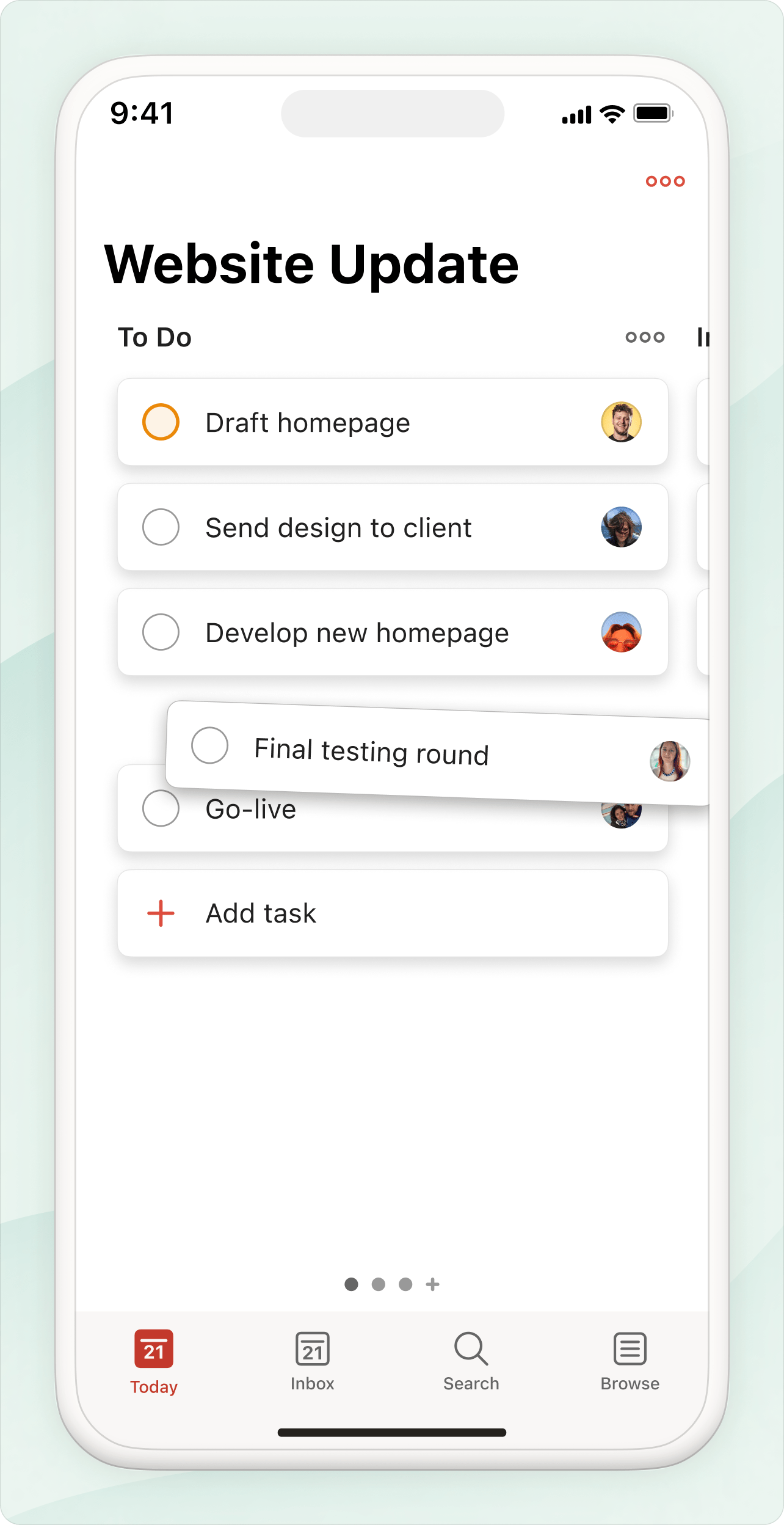
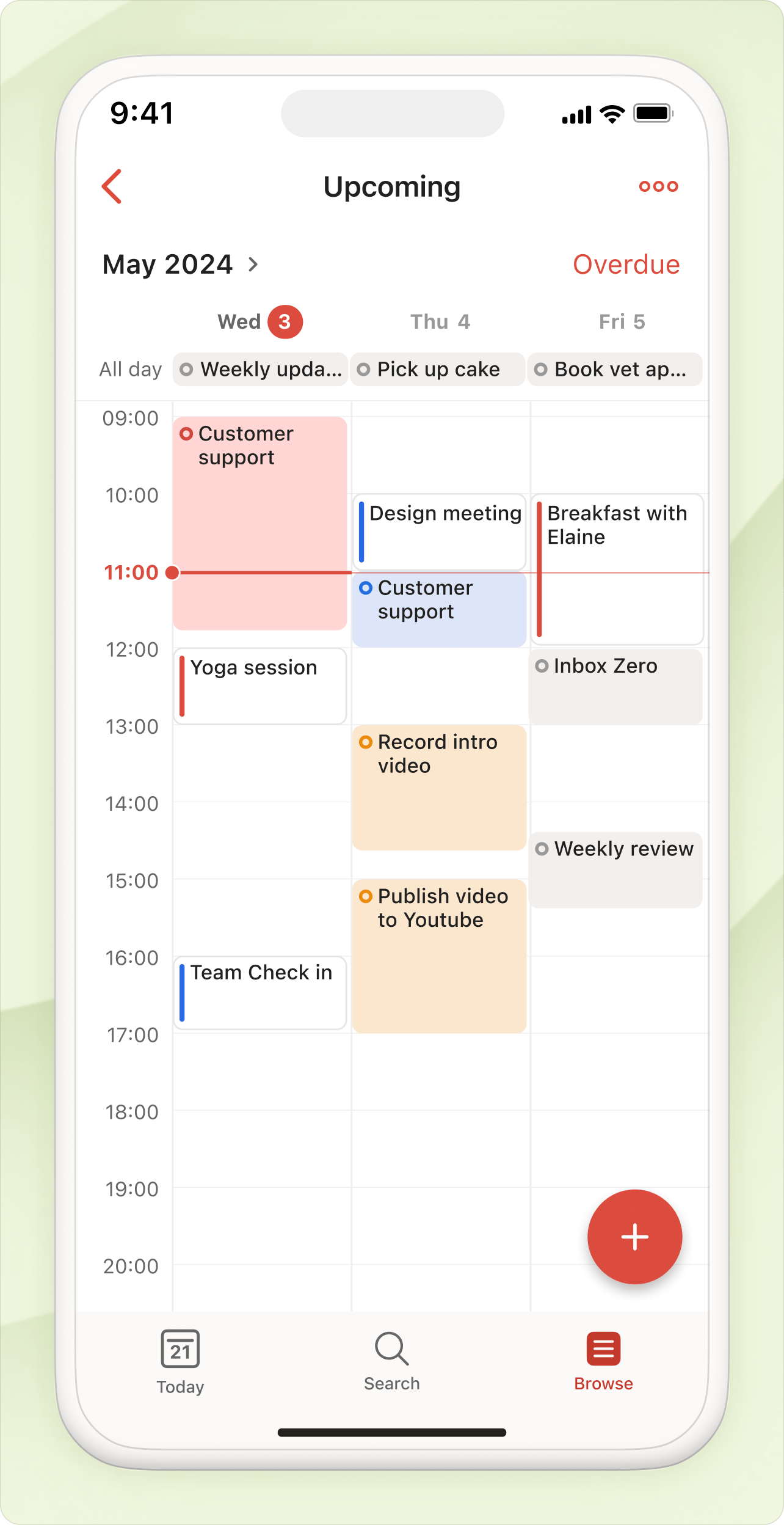
It comes with a minimal and easy-to-use interface, and it lets you create tasks and sub-tasks and organize them into projects. For each task, you can set up a due date, and there’s an “Upcoming” section from where you can quickly see all of your monthly schedule and tasks.
Support for labels, filters, priority levels, comments, attachments, and even integrations with other third-party tools and platforms is also available. Once you create and sign in to your new account, Todoist will automatically backup and sync all of your tasks and notes across your devices, and if you want even more options, you can install one of its browser extensions.
For such a minimal and easy-to-use app, Todoist is a lot more than it seems. A beast in its true nature, hidden by its beautiful poppy UI.
Todoist Pro
Organize your work and life with recurring or simple tasks, due dates, scheduling, and collaborating with other people without spending a fortune. It’s a tool for your individual or business needs.
How much does it cost?
I know that most of you may check for the pricing tag first, and you have every right to do so, especially with so many apps and content creators now hiding their best features and work behind a paywall.
Todoist follows a freemium model, meaning that there’s a free version that you can use, a Pro plan that you can grab if you want to unlock all of Todoist’s features and options, and a Business plan, which is ideal and affordable for small and big teams alike.
| Feature / Limit | Beginner | Pro | Business |
|---|---|---|---|
| Price (per user / per month, annual billing) | $00,00 | $6,00/mon (if billed yearly, $8,00 if billed monthly) | Calendar layout also applies to team projects |
| Shared templates/project folders | 5 personal projects | 300 personal projects | 300 for each member (applies per user) |
| Views / Layouts | List & board layouts | + Calendar layout | Shared templates/project folders |
| Custom filters | 3 filters | 150 filters | 150 filters per member |
| Activity history | 1 week | Unlimited | Unlimited |
| Reminders & advanced reminders | Basic task reminders | Custom reminders, location-based, etc. | Same as Pro, for all team members |
| Task durations | — | Yes | Yes for all members |
| Maximum collaborators per (personal) project | 5 people | 5 people | 5 people |
| Team / collaborative features | — | — | Shared team workspace |
| Team projects | — | — | Up to 500 team projects |
| Roles & permissions | — | — | Team roles & permissions |
| Centralized team billing | — | — | Yes |
| Team activity & logs | — | — | Granular team activity logs |
| Shared templates / project folders | — | — | Shared templates, up to 1000 project folders |
Considering the features that you’re getting along with the fact that there are alternatives with even more expensive subscription plans, I find that $5,00 per month is not that bad for managing all my tasks, to-do lists, shopping and wishlists, and scheduling all my workflow.
To compare Todoist’s pricing with some of the most popular alternatives: It would cost you €14.99 (if paid monthly) for Evernote’s Professional plan, $2.99 per month for Bear’s Pro plan, €10.99 (if paid monthly) per month for Capacities, or €11.50 (if paid monthly) for Notion’s Plus plan.
That’s if you actually want to use all the features and options Todoist has to offer. If the free version is enough for your needs, then go ahead and test it.
Todoist’s best features and integrations
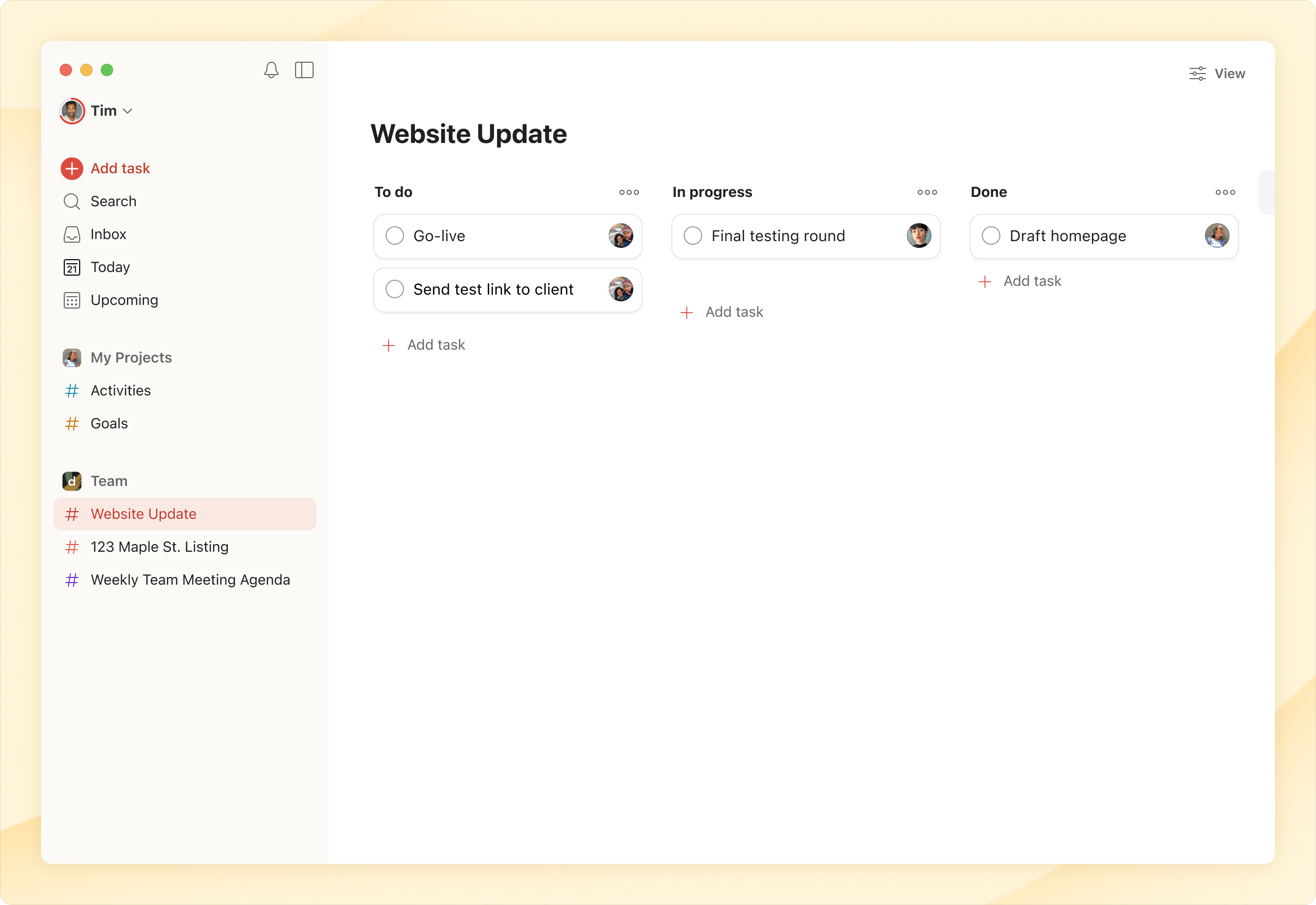
First and foremost, whenever you want to create a new Project, you’ll have the option to choose one of the many available templates. You can also save any of your Projects as a template and import it with one click afterwards.
Each template has been designed for specific purposes and needs, including productivity, personal, education, project management, customer support, and creative, just to name a few. There are also layouts that you can import, including ‘Board‘ and ‘Calendar‘.
There’s also support for calendar synchronization, letting you sign in and give Todoist access to your Microsoft or Google Calendar. That’s great because you’ll be able to see your events within the app’s ‘Today‘ and ‘Upcoming‘ sections, and it automatically syncs the changes between your calendars.
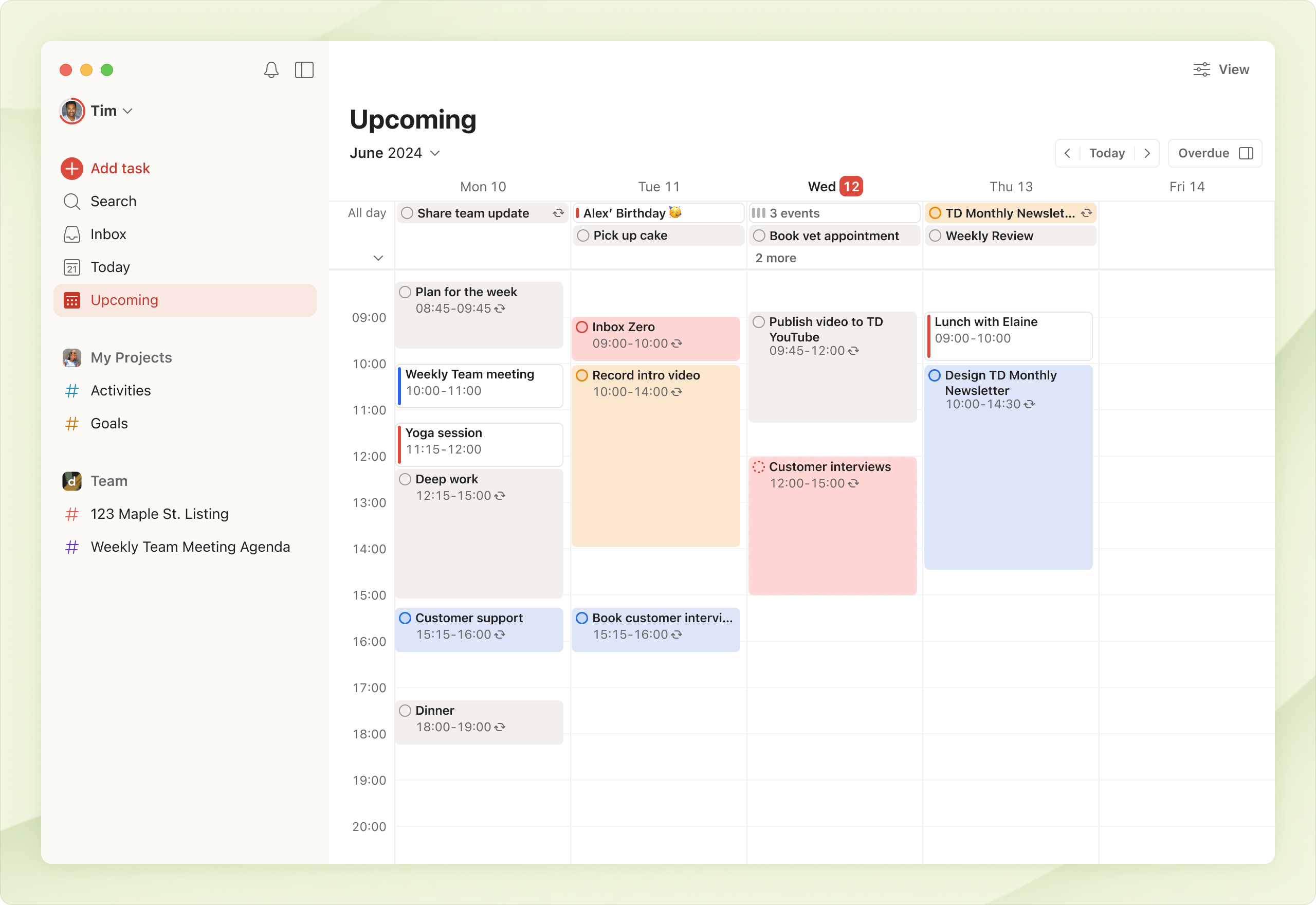
Another cool feature is that you can turn your emails into Todoist tasks by simply forwarding them to a Project. Whenever you do that, the subject line will become the task name, and the body of the email will be added as a comment attachment. You can also add dates, labels, priority levels, and assignees right from your email client.
But what makes Todoist truly shine is its list of integrations. You can connect and sync Todoist with Google, Microsoft, Slack, Zapier, Atlassian, Capacities, Jira, Habit Tracker, Hugo, Momentum, Relay, PolyPlan, Trello, among many others.
The importance of Todoist’s browser extensions
My web browser is so bloated by extensions that if it had a mouth, it would scream (sorry, Vivaldi). So for that reason alone, I usually avoid any others, especially when it comes to to-do and task-management apps that run in the background 24/7. But I couldn’t not use Todoist’s browser extension, which I find super useful.
My beautiful Xiaomi Mi Curved 34″ ultrawide monitor always has a place on the left or right side for my browser. Vivaldi is constantly open, and whenever I’m surfing or doing anything else, I use Zen Browser. Being able to connect my browser of choice with Todoist and quickly add new tasks and notes without closing or opening a new tab and without even alt-tabbing to another app is absolutely perfect for me.
Being notified whenever I have something to do right from within my browser was also a salvation to my ultimate problem; operating systems tend to get way too cluttered with unnecessary notifications. But my browser? Although bloated with extensions, there are only a handy number of notifications I receive, and they’re the most important ones.
Now, what made my life a whole lot easier is Todoist’s “add website as a task” option. For example, the other day, a client asked me to make a few changes to one of their pages, and they sent me the link. I’ve right-clicked on the page, saved it as a task on Todoist, and added a reminder for later that day.
Quick, easy, and pointless.
How to transfer your notes and tasks to Todoist
If you’re using any to-do or task-management application that lets you export everything into a CSV file, then you can quickly import everything into Todoist.
Unfortunately, not all CSV files will work, and for many apps with lots of attributes, you may have to configure and verify some of them.
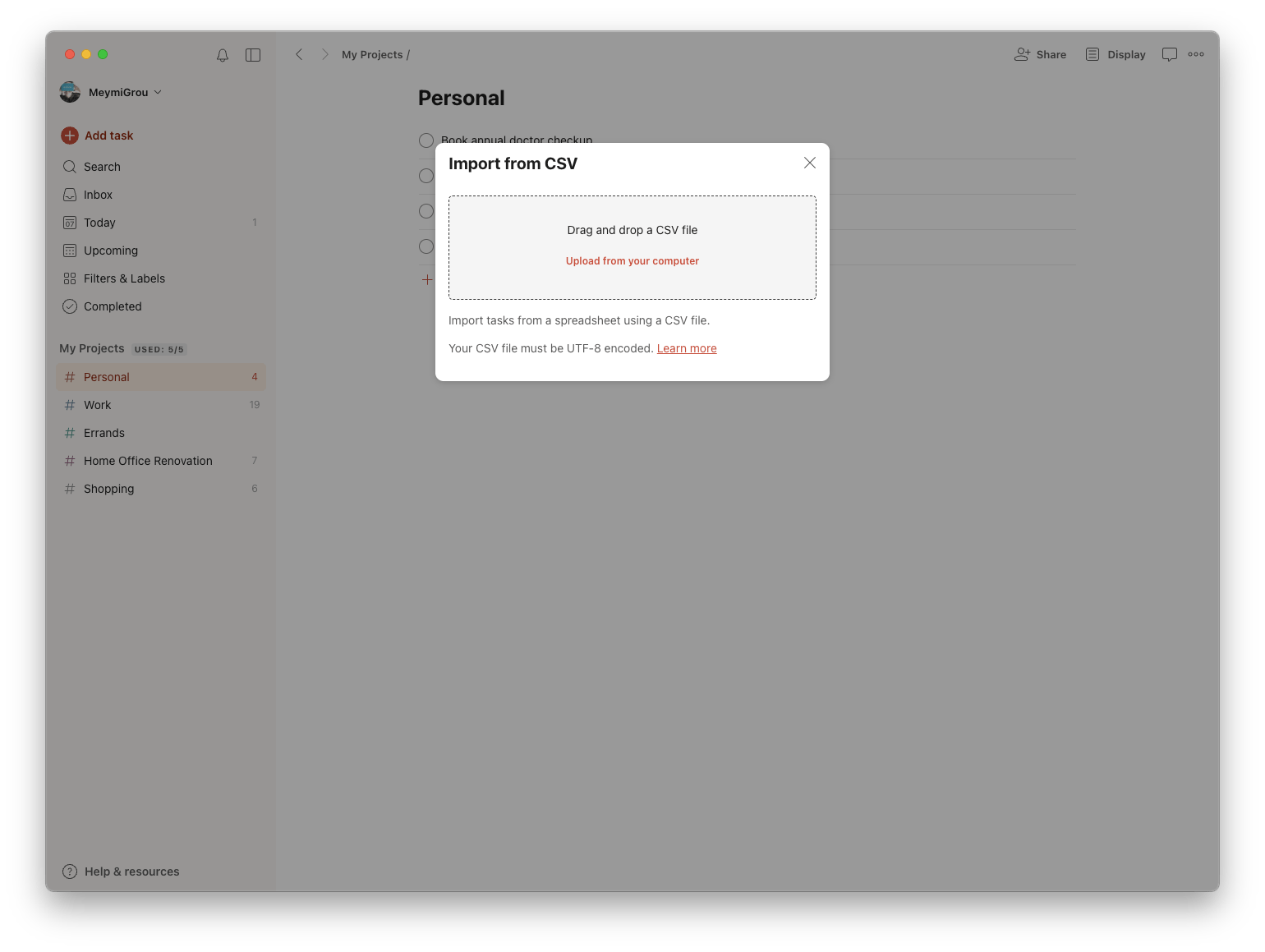
Here’s how to upload a CSV file to Todoist:
- Open the app and log in to your Todoist account.
- Create a new project or open an existing one.
- Click the three dots icon at the top-right and select Import from CSV.
- Drag your CSV file to the upload window or click “Upload from your computer“.
- After importing, check that all tasks and attributes have been correctly imported into the project.
Todoist also provides a CSV Template that you can download, import into Excel, and adjust it based on your needs. In Microsoft Excel, simply click on File → Save as… → Select CSV UTF-8 (Comma delimited) (.csv) from the file format menu and click Save.
If you’re using Numbers, you can go to File → Export to… → CSV → Advanced Options → Unicode (UTF-8) from the Text Encoding drop-down menu → Next and Save.
How I’ve been using Todoist
I needed a simple task-management app that was minimal yet very powerful at the same time. I wanted a lot of features, and I wanted it to be fast. Todoist has everything I need to keep everything organized in one place that I am not afraid visiting (too many tasks can be scary sometimes).
I’ve created a few Projects in Todoist, each and every one for a specific purpose:
- Clients: This is where all my tasks go. For each client I am working with, I have a whole list of sub-tasks, many of which have labels and a due date.
- Projects: This is where all my to-do lists, tasks, and reminders for all the personal projects that I am currently working on live. Whether it’s for writing blog posts or books, building a new website or an app, designing a template, or starting a new podcast, everything I have to do is organized into this project.
- Goal Tracker: This is the place where all my goals are awaiting to be completed, and the fewer they remain, the better I feel.
- Family: This is a shared project with my mother, sister, and brother. Sometimes it’s for organizing our holidays, other times for groceries we have to buy whenever we visit, and even to keep everyone updated during our vacations.
- Weekly Review: Each week, I feel like I need to review my past seven days, and see how much I worked, what I’ve made, if I’m on the right track to complete more of my goals, and if I am losing time on unnecessary things.
- Wishlist: As simple as a basic list with all the things that I want to buy, organized by importance.
Those are the ones that are always on my left sidebar, keeping things inside Todoist as clean and easy to my eyes as possible. But they’re not the only ones I use.
A few months ago, we visited Meteora in Greece, and we went to try their mountain bike tracks. We were three friends, and we used Todoist to quickly organize a whole trip by creating a list with all the things that we had to get, Airbnbs to stay, other places to visit, and ideas that we may have had. We could quickly comment on and organize the whole thing within less than a week.
Many times, I also create new projects and import the right template for every occasion, but many of them tend to get removed once I complete them.
Starting a new project? There’s the ‘Project Tracker‘ template. Want to plan a meal? There’s a template for that. A client management system? Yep, there’s a template for that, too. Just create a new project, click on the “Browse templates” option at the end of the page, and choose a template to import.
Should you use Todoist?
The short answer is: Try it first, and if you like it, continue using it. You can try the free version for as long as you want, and there’s even a free trial to take a look at the advanced options, too. It’s available for basically all your devices, can be integrated with third-party apps, and has pre-made templates to get started faster than ever before.
For the past few months, I haven’t had the need to migrate away from Todoist. It simply works. It’s stable, fast, and I have never faced an issue – and I can’t say the same for other alternatives. I’ve faced many errors and sudden crashes with Notion and Obsidian, and even Microsoft’s OneNote had sync issues.
If you don’t want more projects and members, staying with the free version is totally fine, but if you want to organize everything and share your tasks or lists with others, getting their cheap Pro plan is highly recommended.
Have you ever used Todoist? And what did you like and hate the most about it? Are you currently using it, or have you found another better task-management app? Let me know in the comments down below.



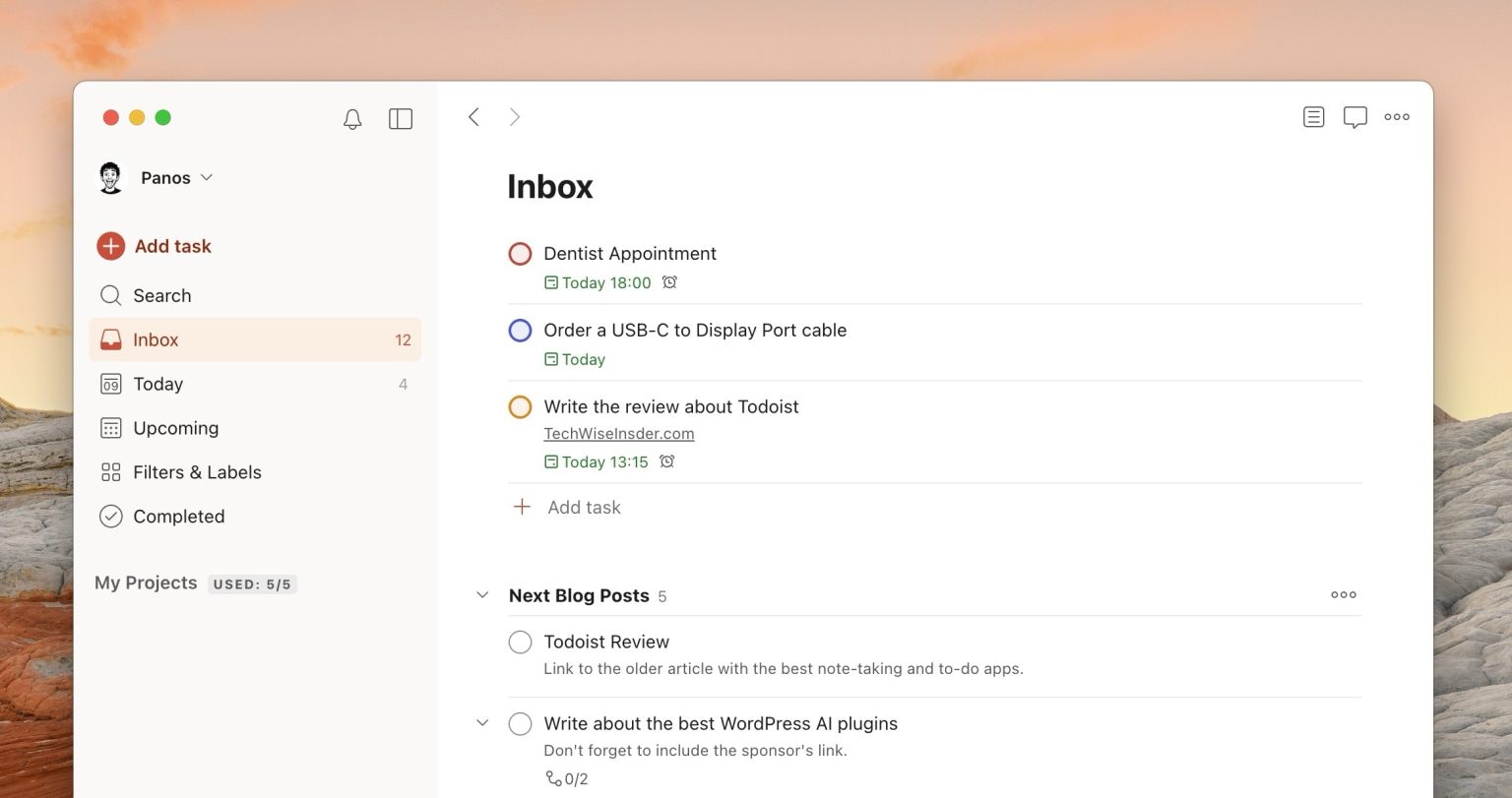
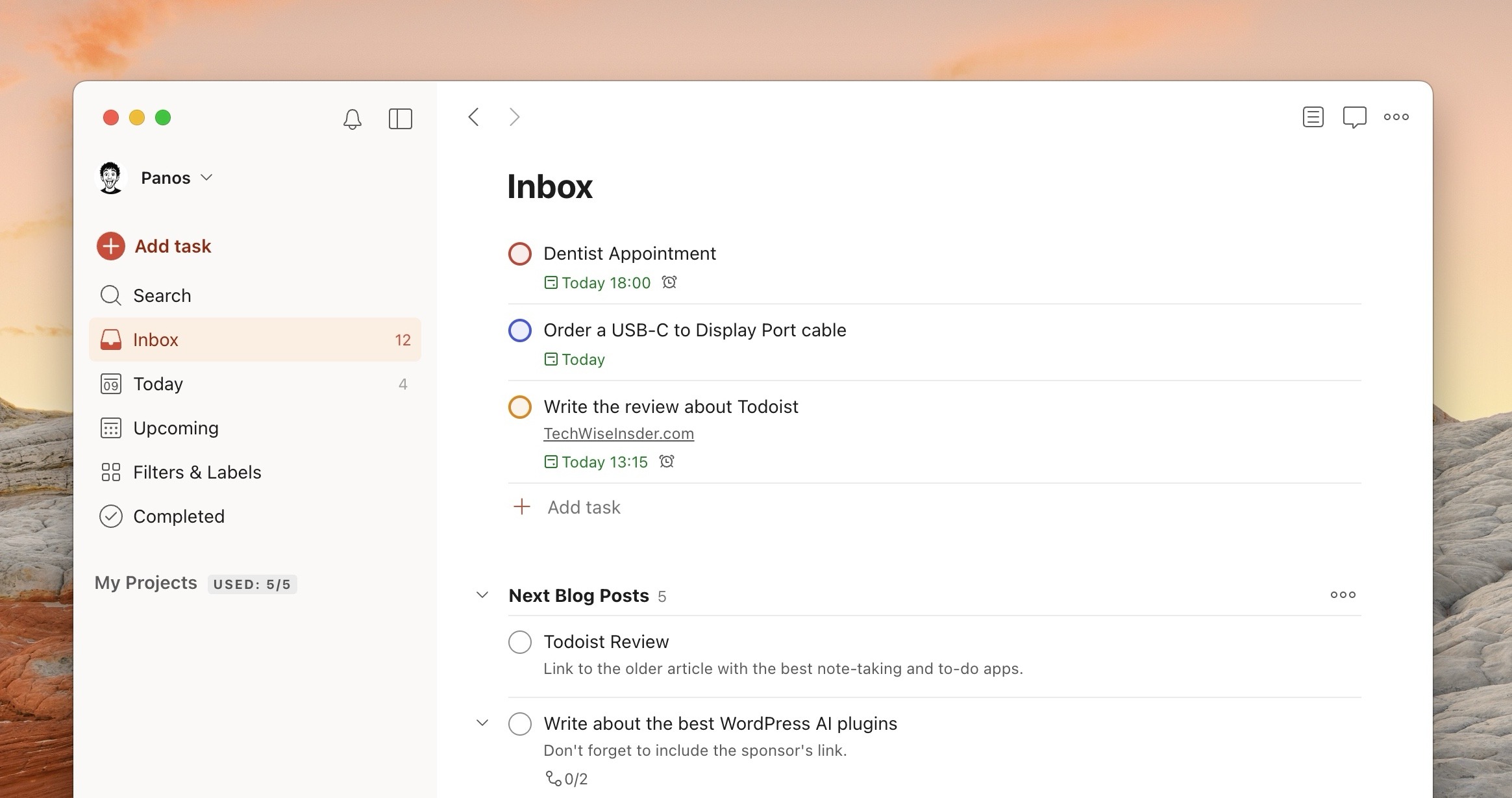



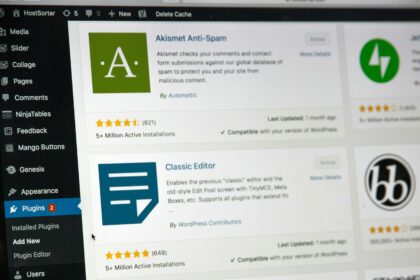


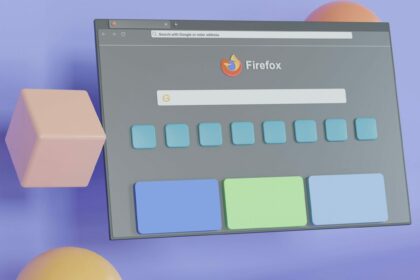




Absolutely the best to-do app I’ve used. I’ve been using Todoist for over 2 years now and I couldn’t live without it (it reminds me of literally everything I have to do).